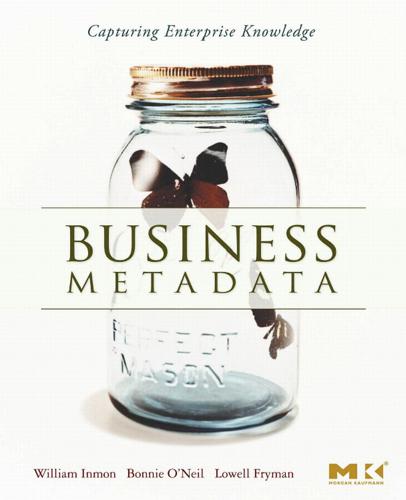
Business Metadata: Capturing Enterprise Knowledge
by
William H. Inmon
,
Bonnie K. O'Neil
and
Lowell Fryman
Published 15 Feb 2008
Business metadata can be in the form of categorization schemes such as taxonomies, but can also be as simple as good descriptive file names. Some interesting Web trends are setting the stage for new ways of sharing tags and categorizing information such as folksonomies, manifested in sites such as del.icio.us and flickr. Del.icio.us allows you to tag Web sites and share your tags with others, and it also takes advantage of other people’s tags to find similar information. Flickr is another example of a folksonomy; you share your pictures online, and you tag them different things, based on your own way of understanding the world. Both are creative examples of business metadata. 280 Chapter 16 16.6 In Summary What Does the Future Hold?
…
95 Socialization of Knowledge 96 Technology That Fosters Knowledge Socialization 98 Social Networking 99 Portals and Collaboration Servers 100 Wikis and Knowledge Socialization 103 Wikis and Governance 106 Balancing Out the Need for Governance with the Need for Contributions: “Governance Lite™ ” 107 How Governance Lite™ Works 107 The Search for Technology 109 Business Glossary Technology 111 Publicity 112 Visibility versus Usefulness 113 Knowledge Capture from Individuals: The Individual Documentation Problem 114 Web 2.0 and Knowledge Capture 115 Mashups 115 User-Defined Tags: Folksonomy 118 Summary 119 References 119 89 Complete Table of Contents xiii Chapter 7 Capturing Business Metadata from Existing Data 7.1 7.2 7.3 7.4 7.5 121 Introduction 121 Technical Sources of (Both Business and Technical) Metadata 122 Enterprise Resource Planning Applications 122 Reports 122 Spreadsheets 123 Documents 123 DBMS System Catalogs 124 Business Intelligence Tools 124 Extract-Transform-Load (ETL) 124 Legacy Systems and On-Line Transaction Processing (OLTP) Applications 125 The Data Warehouse 126 Summary of Metadata Sources 127 Editing the Metadata as It Passes into the Enterprise Metadata Repository 128 Automation of Editing 128 “Granularizing” Metadata 129 Expanding Definitions and Descriptions 129 Synonym Resolution 131 Homonym Resolution 132 Using a Staging Area 134 Manual Metadata Editing 134 Turning Technical Metadata into Business Metadata 135 Summary 137 Chapter 8 Business Metadata Delivery 8.1 8.2 Introduction 139 Separating Business Metadata and Technical Metadata 140 139 xiv Complete Table of Contents 8.3 8.4 8.5 8.6 8.7 Principles of Business Metadata Delivery 140 The Importance of Easy Access: Avoid the “Roach Motel!”
…
The existence of many abandoned searches could be an indicator that the taxonomy is hindering, not helping, the search process. 4.5.2.8 Self-Organizing Tags What if you let everyone create their own tags for documents (both their own and everyone else’s) and share them? Would this make searches easier for everyone? This self-organizing tagging structure is called a folksonomy, made popular by a Web site called del.icio.us. It follows the “Wisdom of Crowds” philosophy (made popular by the book of the same name) that a crowd is smarter than one person alone. This subject is discussed in more detail in Chapter 6, Business Metadata Capture. 4.6 Summary Bad communications have dire consequences, ranging from major disasters that cause loss of life or billions of dollars to bad business decisions.

The Secret War Between Downloading and Uploading: Tales of the Computer as Culture Machine
by
Peter Lunenfeld
Published 31 Mar 2011
Sites like flickr, for tagging and sharing photos, and del.icio.us, for social bookmarking, allow users to categorize, collect, and share their archiving strategies, and has even led to a new term for this explosion of user-generated activity: “folksonomies.”1 The opposition here is between librarians, archivists, and information specialists, who all professionalize and systematize this kind of activity into “taxonomies,” and the evolving personal and social-group-driven folksonomies. The taxonomists are those who have devoted their lives to sophisticated systems for categorizing and organizing the world, drawing on predecessors from eighteenth-century Swedish biologist Carolus Linnaeus and his rankings of class, order, genus, species, and variety, to Melvil Dewey’s nineteenth-century decimal system for arranging books on library shelves, still in modified use today. 80 WEB n.0 The folksonomists, by contrast, tend to invent their categories, and even more important, create the tags, terms, or keywords associated with a file or digital object.
…
Of course, even the taxonomists assume multiplicities, with felis catus having equally valid synonyms like felis domesticus and felis silvestris catus.2 Add to this the fact that there are geometrically more amateur folksonomists than there will ever be rigorous taxonomists, not to mention that the National Center for Biotechnology Information taxonomy number will almost certainly be of less interest to most people than some other, more random, metatag (the cat’s cuteness or ability to use a toilet come to mind).3 As they layer complexity and even confusion into expanding networks, folksonomies expand affordances for uploading and comprise a net social good. Social media sites like MySpace and Facebook enable users to create giga-, tera-, and even petabytes of new data in the form of texts, pictures, sound files, and video. In social media environments, posting becomes easier, while finding, sorting, and storing become ever-more complex. The relentless push to market technological innovation helps drive new habits of mind like folksonomies, but also places attractive impediments in their way. Two of the present grails are ubiquity—the embedding of computational power in every environment—and mobility—the ability to communicate with the network from anywhere.
…
The taxonomists are those who have devoted their lives to sophisticated systems for categorizing and organizing the world, drawing on predecessors from eighteenth-century Swedish biologist Carolus Linnaeus and his rankings of class, order, genus, species, and variety, to Melvil Dewey’s nineteenth-century decimal system for arranging books on library shelves, still in modified use today. 80 WEB n.0 The folksonomists, by contrast, tend to invent their categories, and even more important, create the tags, terms, or keywords associated with a file or digital object. As these tags are linked through the network, they become markers in ever-larger systems, adding levels of what has come to be termed “metadata.” The downside of folksonomies is that they lack clear rules: people tag pictures of their cat with its name or what the animal may be doing, rather than as felis catus, the National Center for Biotechnology Information’s taxonomy identification number 9685, with a Global Positioning System marker and a time stamp. Of course, even the taxonomists assume multiplicities, with felis catus having equally valid synonyms like felis domesticus and felis silvestris catus.2 Add to this the fact that there are geometrically more amateur folksonomists than there will ever be rigorous taxonomists, not to mention that the National Center for Biotechnology Information taxonomy number will almost certainly be of less interest to most people than some other, more random, metatag (the cat’s cuteness or ability to use a toilet come to mind).3 As they layer complexity and even confusion into expanding networks, folksonomies expand affordances for uploading and comprise a net social good.

Designing Search: UX Strategies for Ecommerce Success
by
Greg Nudelman
and
Pabini Gabriel-Petit
Published 8 May 2011
These archetypes dictate their innate psychic predispositions and aptitudes, which condition their responses to life experience and basic patterns of human behavior. At the root of all folksonomies (see sidebar) is the inherent assumption that people—looked at collectively—tend to respond in similar ways when presented with the same stimuli. Simply put, people looking for images of cats would be quite happy to find the images that many other people have taken the time to tag with the word cat. Figure 14-2: Google Images search results for iPhone with filters Large, Clipart and Green applied Folksonomy Folksonomy is a term coined by Thomas Vander Wal in 2004 using a combination of two words, folks and taxonomy. Folksonomy refers to a system of classification based on the practice of collaboratively creating and managing tags to annotate digital content.
…
This feature taps query reformulation data, the terms user enter after their first search fails, to make the semantic leap and help users who start in the wrong place weigh anchor and move on. A typical search process involves fluidly moving between activities such as typing in a query and then refining that query; browsing search results, product categories, or brand catalogs; navigating tag folksonomies; or expanding a search by following breadcrumbs. Most likely, these patterns reflect human species’ relatively nascent adaptation of the ancient food- and shelter-seeking behaviors to the fast-moving, multifaceted digital world. To describe these complex human behaviors, multiple theoretical models for information seeking have been developed.
…
The back-end algorithm does require a fair bit of the infrastructure to implement the query tracking; although, some third-party APIs such as Yahoo BOSS are now available to make the job of created related searches easier. In my studies, I discovered that the majority of suggestions that revolved around modifications of the original query were positively received due to a strong user perception that these recommended queries represent the combined “wisdom of the crowds” similar to the concept of folksonomies and tagging. Note—On the other hand, many people I observed were highly suspicious of any orthogonal queries that recommended competing brands or products. For example, a related query shown in Figure 11-3 that recommends “Nikon” when the person typed in Canon would quickly cause some people to become mistrustful and question the value of the other suggestions shown in the related searches module.
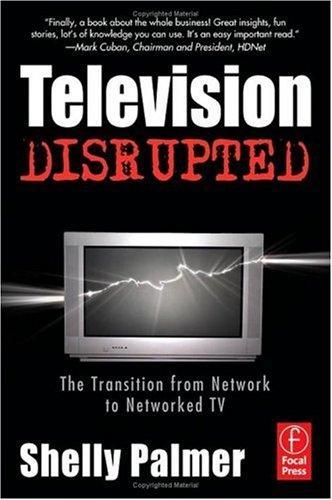
Television disrupted: the transition from network to networked TV
by
Shelly Palmer
Published 14 Apr 2006
The idea of “tag clusters” or “tag clouds” is the process of allowing users to create their own taxonomies that feed a central community taxonomy to create a “folksonomy,” which, as simply as it can be described, is a collaborative description of a given object. Copyright © 2006, Shelly Palmer. All rights reserved. 6-Television.Chap Six v3sp.qxd 3/20/06 7:22 AM Page 82 82 C H A P T E R 6 Content, Storytellers, Gatekeepers and Related Skills Folksonomy On www.vanderwal.net, Thomas Vander Wal (who coined the term folksonomy) describes it as “the result of personal free tagging of information and objects (anything with a URL) for one’s own retrieval.
…
Flash Downloading The ability to automatically send software upgrades to a set-top box network. It comes from the computer industry’s term for “flashing” or burning new computer programs into an Erasable Programmable Read Only Memory (EPROM) chip. Focus Moving a cursor over an area of the screen to highlight it. Folksonomy Folksonomy is a neologism for a practice of collaborative categorization using freely chosen keywords. FoodTV Food Network is a unique lifestyle network and web site that strives to surprise and engage its viewers with likable hosts, personalities, and the variety of things they do with food. The E.
…
Of course, the biggest social Copyright © 2006, Shelly Palmer. All rights reserved. 8-Television.Chap Eight v3.qxd 3/20/06 7:25 AM Page 114 114 C H A P T E R 8 Media Consumption networking sites like friendster.com or myspace.com are also big brands, so this may be just another permutation of branded search. (See “Folksonomy” in Chapter 6.) The Myth of the Media Center – the Fight for the Living Room Media center computers are personal computers that include television tuner cards and special software that enables them to act like a television set with a DVR and associated feature sets. Most media center computers also include functionality that allows the user to aggregate video, audio and digital photos into one centralized user interface.
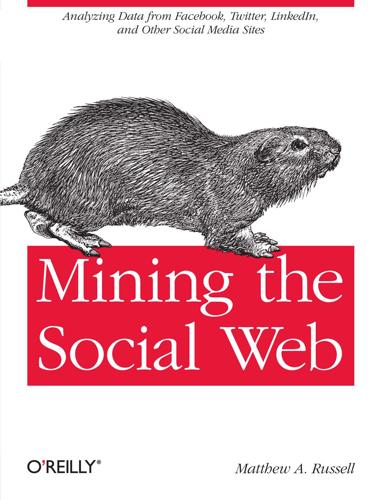
Mining the Social Web: Finding Needles in the Social Haystack
by
Matthew A. Russell
Published 15 Jan 2011
For example, it seems reasonable to assume that someone who averages 2+ hashtags per tweet is very interested in bridging knowledge and aware of the power of information, whereas someone who averages 0.1 hashtags per tweet probably is less so. What’s a Folksonomy? A fundamental aspect of human intelligence is the desire to classify things and derive a hierarchy in which each element “belongs to” or is a “child” of a parent element one level higher in the hierarchy. Leaving aside philosophical debates about the difference between a taxonomy and an ontology, a taxonomy is essentially a hierarchical structure that classifies elements into parent/child bins. The term folksonomy was coined around 2004 as a means of describing the universe of collaborative tagging and social indexing efforts that emerge in various ecosystems of the Web, and it’s a play on words in the sense that it blends “folk” and “taxonomy.”
…
The term folksonomy was coined around 2004 as a means of describing the universe of collaborative tagging and social indexing efforts that emerge in various ecosystems of the Web, and it’s a play on words in the sense that it blends “folk” and “taxonomy.” So, in essence, a folksonomy is just a fancy way of describing the decentralized universe of tags that emerges as a mechanism of collective intelligence when you allow people to classify content with labels. Computing the average number of hashtags per tweet should be a cake-walk for you by now. We’ll recycle some code and compute the total number of hashtags in one map/reduce phase, compute the total number of tweets in another map/reduce phase, and then divide the two numbers, as illustrated in Example 5-13.
…
.""" % DB sys.exit(1) # Emit the number of hashtags in a document def entityCountMapper(doc): if not doc.get('entities'): import twitter_text def getEntities(tweet): # Now extract various entities from it and build up a familiar structure extractor = twitter_text.Extractor(tweet['text']) # Note that the production Twitter API contains a few additional fields in # the entities hash that would require additional API calls to resolve entities = {} entities['user_mentions'] = [] for um in extractor.extract_mentioned_screen_names_with_indices(): entities['user_mentions'].append(um) entities['hashtags'] = [] for ht in extractor.extract_hashtags_with_indices(): # Massage field name to match production twitter api ht['text'] = ht['hashtag'] del ht['hashtag'] entities['hashtags'].append(ht) entities['urls'] = [] for url in extractor.extract_urls_with_indices(): entities['urls'].append(url) return entities doc['entities'] = getEntities(doc) if doc['entities'].get('hashtags'): yield (None, len(doc['entities']['hashtags'])) def summingReducer(keys, values, rereduce): return sum(values) view = ViewDefinition('index', 'count_hashtags', entityCountMapper, reduce_fun=summingReducer, language='python') view.sync(db) num_hashtags = [row for row in db.view('index/count_hashtags')][0].value # Now, count the total number of tweets that aren't direct replies def entityCountMapper(doc): if doc.get('text')[0] == '@': yield (None, 0) else: yield (None, 1) view = ViewDefinition('index', 'num_docs', entityCountMapper, reduce_fun=summingReducer, language='python') view.sync(db) num_docs = [row for row in db.view('index/num_docs')][0].value # Finally, compute the average print 'Avg number of hashtags per tweet for %s: %s' % \ (DB.split('-')[-1], 1.0 * num_hashtags / num_docs,) For a recent batch we fetched earlier, running this script reveals that Tim averages about 0.5 hashtags per tweet that is not a direct reply to someone. In other words, he includes a hashtag in about half of his tweets. For anyone who regularly tweets, including a hashtag that much of the time provides a substantial contribution to the overall Twitter search index and the ever-evolving folksonomy. As a follow-up exercise, it could be interesting to compute the average number of hyperlink entities per tweet, or even go so far as to follow the links and try to discover new information about Tim’s interests by inspecting the title or content of the linked web pages. (In the chapters ahead, especially Chapters 7 and 8, we’ll learn more about text mining, an essential skill for analyzing web pages
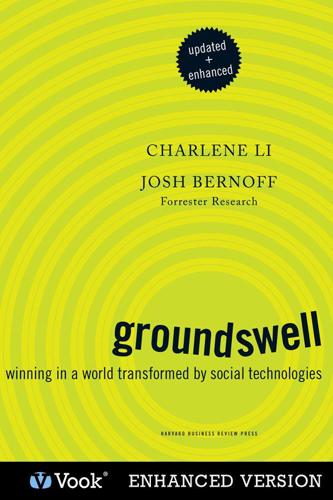
Groundswell: Winning in a World Transformed by Social Technologies
by
Charlene Li
and
Josh Bernoff
Published 23 May 2011
David Weinberger explains in his book Everything Is Miscellaneous: See Everything Is Miscellaneous: The Power of the New Digital Disorder by David Weinberger (Times Books, 2007). The author’s Web site is at www.evident.com. 14. Folksonomy, a term coined by Thomas Vander Wal: For a history of the term folksonomy, see Thomas Vander Wal’s February 2, 2007, blog post “Folksonomy” on the blog vanderwal.net, visible at http://forr.com/gsw2-14. 15. A construction funded by Walmart’s PR agency, Edelman: The blog was formerly at www.walmartingacrossamerica.com. Going to that address now yields an error. But if you tag it on Delicious, you can still see how others have tagged it—and “fake” is one of the most popular tags.
…
A classification system for the groundswell has to be more flexible than this, as David Weinberger explains in his book Everything Is Miscellaneous.13 That’s where tags come in. HOW THEY WORK. Consider a Web site where NASCAR fans discuss race standings. You might classify it “NASCAR” and “discussion group,” while we would classify it “forum” and “fan phenomena.” This loose, overlapping classification of tags is sometimes called a folksonomy, a term coined by Thomas Vander Wal.14 A folksonomy depends on the opinions of the folks out there, not on the experts. Tags have become the standard way that sites add people-driven organization. Digg, which we discussed in chapter 1, is a tagging site—you tag (“digg”) which news stories you prefer and decide into which category they should go.
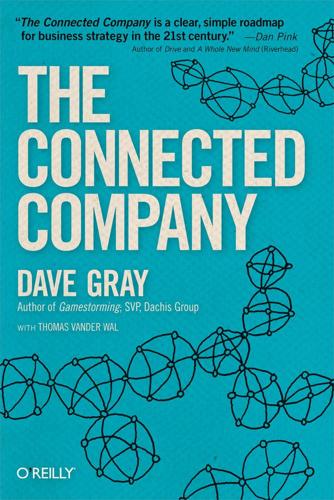
The Connected Company
by
Dave Gray
and
Thomas Vander Wal
Published 2 Dec 2014
Dave's time is spent researching and writing on visual business, as well as speaking, coaching and delivering workshops to educators, corporate clients and the public.He is also a founding member of VizThink, an international community of Visual Thinkers. Thomas Vander Wal has been working with folksonomies since their darkest origins, and is credited with inventing the terms 'folksonomy'and 'infocloud'. He talks and writes about folksonomies more or less continuously. Thomas is also on the Steering Committee of the Web Standards Project and helped found the Information Architecture Institute. He lives in Bethesda, Maryland. The Connected Company Dave Gray Thomas Vander Wal Editor Julia Steele Editor Mary Treseler Revision History 2012-08-20 Copyright © 2012 Dachis Group O’Reilly books may be purchased for educational, business, or sales promotional use.
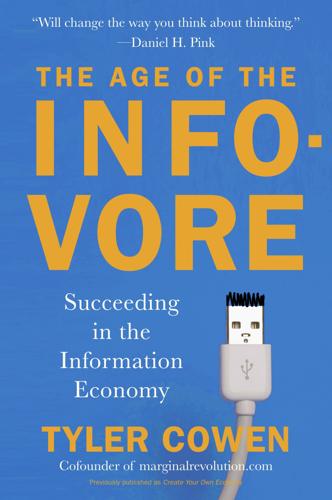
The Age of the Infovore: Succeeding in the Information Economy
by
Tyler Cowen
Published 25 May 2010
Right now Flickr offers more than two billion images, all laid out in a searchable order. I searched my own name and in less than two seconds I found four photos tagged (by other users) under my name, including a photo of myself and also a photo of a large stack of books. The new word for such sites is “folksonomy,” which combines the two roots of “folk” and “taxonomy.” What is Wikipedia but a vast ordered, intellectual space to collate and effectively present the factual and analytical knowledge of mankind? It is one of the most impressive projects of ordering that human beings have undertaken. It would be a mistake to think that our new infatuation with information and ordering is about the mind at the expense of the body.
…
See focusing Constitution of Liberty (Hayek), 201 consumer satisfaction, 120 control of information, 4–5 conversation summaries, 97 coordination, 132–33, 134 corruption, 208 cosmopolitanism, 196–99, 201, 203 “The Costs of Autism” (Ganz), 34 countries, travel to, 104–5 Cowansage, Kiriana, 173–75, 187–88 Cowen, Tyler (nine-year-old), 86 Craigslist, 24, 47 creativity, 58 Critique of Pure Reason (Kant), 205 culture access to, 41, 42–43, 61–63 and acculturation, 106–7 addiction to, 55–56 and attention spans, 53–55 costs of, 43 cultural literacy, 59 culture of small bits, 43–44, 50–51 diversity in, 198, 218–21 effect of the internet on, 46 and information overload, 50–51 and instant messaging, 70–71 and least-common-denominator effect, 134 and multitasking, 51–53, 56–57 romance compared to, 42, 60–62 sampling of, 41, 44–48 self-assembled blends of, 51–52, 56–58, 65, 67, 154 term, 41–42 ugliness of, 41, 59–60, 62, 63 value in, 9 Dalai Lama, 92, 95, 96, 156 Danto, Arthur, 191 Darwin, Charles, 25, 166 Dawson, Michelle, 27–28 daydreaming, 108–9 Declaration of Independence, 200 Delicious, 10–11 De Martino, Benedetto, 195 democracy, 207 detail-oriented personalities, 148–49, 176, 189 Dickinson, Emily, 166 difficulties experienced by autistics, 110, 212 Digg lists, 55 Dirac, Paul, 25, 166 discrimination aimed at autistics, 197, 221–22 Distinction (Bourdieu), 177 diversity, 198 division of labor, 215–16 Don Giovanni (Mozart), 57–58 Donohoo, Mark, 3 Don Quixote (Cervantes), 120–21 Doyle, Sir Arthur Conan, 148, 153, 154, 155–56, 160 Drake Equation, 224–25 Dudley, Leonard, 65 Dylan, Bob, 166 Dyson, Esther, 49 eating habits, 31 eBay, 47, 85 echolalia, 31, 168 Eco, Umberto, 156 economics, 121–22, 123–26, 129, 202 Edison, Thomas, 25, 166 education, 105–15 and acculturation, 106–7 and aesthetic values, 177 and autistic cognitive skills, 107, 109–11, 115, 215 and face-to-face instruction, 111–15 and focusing, 108–9, 115 limits of, 211 rate of return on, 115 signaling model of, 106, 110 8hands.com, 9 Einstein, Albert, 25, 166 email, 52, 78 e-memory, 98 employment, 69 endowment effect, 195–96, 199 engineering, 24 ethics, codes of, 199 evangelical Protestants, 107 everytrail.com, 12 exchange, benefits of, 218 expectations, 60–61, 81–82, 124 experience machine, 142–46 “Explaining Enhanced Logical Consistency During Decision Making in Autism” (De Martino et al.), 195 eye contact, 31, 36 eyesight, 18 Facebook and advanced civilizations, 227–28 and framing effects, 81–84 groups in, 86, 87 and mental ordering, 7–8, 12, 13 popularity of, 47 facial recognition, 25, 132 Fasanella, Kathleen, 1 Fauron, M., 104 FeedDemon, 85–86 Fein, Deborah, 26 Feldman, Morton, 44 Fermi, Enrico, 223 Fermi Paradox, 223, 225, 227 films, 114, 134 Finding Angela Shelton (Shelton), 86 Finland, 219–21 Finland: Cultural Lone Wolf (Lewis), 220 Flickr, 11 focal points, 130–32, 133, 136 focusing of Adam Smith, 168 of autistics, 92–94, 109, 111 and education, 108–9, 115 folksonomy, 11 food preferences, 31 framing effects and articulable interests, 89 and autistics, 196 and communication, 78–84 defined, 6 and the experience machine, 143–44 and Facebook, 81–84 and mental ordering, 6–7 freedom, 200–201, 208–9 Freud, Sigmund, 103, 179 Friedman, Milton, 179 FriendFeed, 9 friendship, 81–82, 85, 208 Fuser, 9 Ganz, Michael L., 34 Garmin Forerunner 305 GPS, 12 Gates, Bill, 25 Gathera, 9 gender imbalances, 69–70 genetic component of autism, 36 The Glass Bead Game (Hesse), 160–66 Gödel, Kurt, 202 Godfather series, 134 Gogh, Vincent van, 25, 166 goods, 139–40 Google and articulable interests, 88–89 and attention spans, 53, 54–55 and dress code, 130 and mental ordering, 13 popularity of, 46 Google Earth, 10, 131 Googlegänger, 86 Google Reader, 85–86 Google Sky, 10 Gore, Thomas, 25 Gould, Glenn, 25, 166, 167 Grandin, Temple, 24–25, 180, 216, 219 Great Depression, vii groups, 87 groupthink, 197 Guevara, Ernesto “Che,” 179 Guinness World Records, 105 Halberstadt, Germany, 44 Handbook of Autism and Pervasive Developmental Disorders, 38 Hanson, Robin, 193–94 Harlequin novels, 127 Harry Potter series, 128, 133 Hart-Davis, Guy, 5 Hassan, Mohammed, 86 Hayek, Friedrich A., 201–3 Heidegger, Martin, 142 Herodotus, 199 Hesse, Hermann, 160–66 historical figures, 166–67 Hofstetter, Steve, 8 Holmes, Mycroft (fictional character), 151–53 Holmes, Sherlock (fictional character), 148–60 brother of, 151–53 commercial success of series, 156, 165 detail-oriented personality of, 148–49, 156, 158–59 orderliness of, 150, 159 powers of reasoning of, 152, 153, 156–57 social intelligence and interactions of, 149–50, 154, 156, 157 Holt, Molly, 26 The Holy Grail, 137 homo ordo, 13 House, Gregory (fictional character), 154 household production, 141 House M.D., 154 HowManyAsMe website, 86 HTML, 71 Hume, David, 177, 204 humor, 31 Hussain, Zakir, 187 Hussein, Saddam, 122 identity, 120, 134, 136–37 incentives, 122, 123–24 Indian classical music, 187 individual, respect for the, 222–23 Inferno (Dante), 128 information, 50–51, 55 information technology, 213 infovores, 2–3, 7, 10, 45 in-group relations, 197–99 Innis, Harold, 65 instant messaging (IM), 66–71, 84 intelligence animal intelligence, 224 and autism and autistic individuals, 18–19, 21, 27–28 and Google, 54 and multitasking, 52–53 non-human, 223–28 interiority, 117, 223, 226–28 internet.
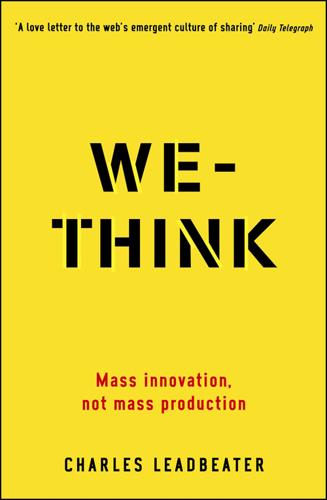
We-Think: Mass Innovation, Not Mass Production
by
Charles Leadbeater
Published 9 Dec 2010
Digital Divides: The web’s impact on equality. International Polar Year: A multinational feat of collaboration in climate science. 2008 Presidential Campaign: The influence of web 2.0 and social networking on the US presidential election 2008. Open-Source Manufacturing: Will the web hand production over to the people? Folksonomy Stats: The rise of ‘tagging’ on the web. Gary Kasparov: How this chess giant took on the collective intelligence of thousands. Encyclopedia of Life: The project that will give every species its own webpage. Web Growth: Charting the growth of the web over the last decade. Mall of the Sims: Virtual shopping for virtual people.
…
Ubuntu: The Linux-based, open-source, community-developed operating system. Apache: The success of open-source web service. World of Warcraft: How the virtual world created by this computer strategy game has changed the reality of over 8 million players’ lives. Web 2.0: Exploring the new face of the web, from blogs to wikis through folksonomies, RSS and social networking. BIBLIOGRAPHY Amor-Iglesias, Juan José, Jesús M. González-Barahona, Gregorio Robles-Martínez and Israel Herráiz-Tabernero, ‘Measuring libre software using Debian 3.1 (Sarge) as a case study: preliminary results’, UPGRADE6.3, June 2005. Available from http://www.upgrade-cepis.org/ issues/2005/3/up6–3Amor.pdf Audretsch, David B., Innovation and Industry Evolution (Cambridge, MA/London: MIT Press, 1995) Bak, Per, How Nature Works (New York: Copernicus, 1996) Baldwin, Carliss Y., and Kim B.
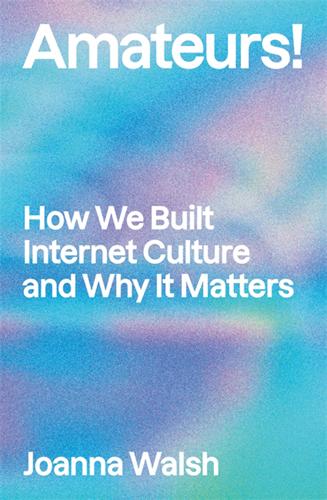
Amateurs!: How We Built Internet Culture and Why It Matters
by
Joanna Walsh
Published 22 Sep 2025
Cottagecore is popular with both lesbians and tradwives; it’s ‘as if Neo Soviets and Anarcho Capitalists found a shared aesthetic’, one fan commented.7 What allows the wiki structure to accommodate opposing political groups is an online practice used across the amateur net: tagging. This linking of images to a range of concepts via descriptions added by individual users – crucially not at the point of publication but across the life of an image – is necessarily communal and amateur. The practice was termed ‘folksonomy’ by self-styled ‘information architect’ Thomas Vander Wal in 2004. Users apply public tags to online items, developing a folk taxonomy with no dictating ethos, depending on a build-up of similar tags. This group or collaborative tagging involves something called ‘radical trust’, a faith in the good faith (and expertise) of users, which was used to build – and continues to maintain – crowd-sourced websites, including IMDb and Wikipedia.
…
A., 148 fascism, resurgence of, 155–6 female aesthetic expression, 166–7 female beauty, critique of the standards of, 142–3 feminine performance, of lack, 136–46, 137 feminisation, 15, 142 feminist representation, 142 Ferrante, Elena, 135–6 fiction, 95–6 truth in, 189–93 fictional people, 132 fictionalisation, 95 financial security, 210 financialisation, 213 finished product, 43 Fisher, Joseph P., 95 Fisher, Mark, 23, 48, 75, 106, 129 Flarf, 45–6 Flota, Brian, 95 folk art, 160 folksonomy, 159 form, and content, 35 Foucault, Michel, 33–4, 131, 132, 202 4chan, 31, 42, 48, 73 #gamergate, 30 fragmentation, forms of, 80 fragments, aesthetic history, 104–5 frame-breaking, 89 frames, 86–7 Frankfurt School, 155 Fraser, Nancy, 168–9, 169–70 free content, proliferation of, 3 Frere-Jones, Sasha, 83 Freud, Sigmund, 12, 57, 63–4, 66 future, the, nostalgia for, 69–73, 70 futurism, 57 #gamergate, 30 gamification, 43–4 Gardner, Drew, 46 Garrett, Marc, 22 Gates, Bill, 216 Gay, Roxanne, 195255 gaze as action, 54 and art, 127 machine, 57 male, 143 technological, 62, 72 Gebru, Timnit, 122–3, 126 gender, and race, 166 Genette, Gérard, 66 gentleman amateur, the, 7–8, 11 geographic metaphors, 219–20 Gevison, Tavi, 144–5 gig workers, 218 Gigapixel, 108 Girl with a Pearl Earring (film), 121 Girl with a Pearl Earring (Vermeer), 105, 105–7, 121–2, 124, 129–30 The Girl with the Pearl Earring (Chevalier), 121–2, 129–30 Glaze, University of Chicago project, 117 Gompertz, Will, 21 Goodman, Nelson, 210 Google, 1, 205 Ethical Artificial Intelligence Team, 122 Google Adwords, 114 Google Books, 116 Google infamy, risk of, 187–9 Goop, 137, 145 governance, 222 GPT large language model, 113 GPT NLP (natural language processing) models, 104 Greenberg, Clement, 24 Grey Academia, 154, 163 Grossman, Lev, 5 group feeling, 103 Guattari, Felix, 54, 84, 86, 98 Gyford, Phil, 57 Habermas, Jürgen, 191, 192–3 hackable environment, 87 hackers, 216–18 hacks, 219 Hall, Stuart, 169 Hallmark Cards, 21 Halter, Ed, 16–18, 21 Hammer, Barbara, 150–2 Hanisch, Carol, 198 happenings, 82, 98 Hardin, Garrett, 213 Harney, Stefano, 218 Harper, Adam, 71 Harvey, David, 151, 213 hashtag activism, 201 hate campaigns, 30, 142 hauntology, 73–6 Hebdige, Dick, 24, 93, 95, 166, 168, 171, 172 Hediger, Vinzenz, 19 Hegel, Georg Wilhelm Friedrich, 133, 206–7 Heidegger, Martin, 132–3, 136 Hepola, Sarah, 194, 194–5 Herbert, Martin, 76 Heti, Sheila, 132, 133 hinge algorithms, 1 Hirschman, Albert, 92 historical past, aesthetic colonisation of, 74–5 Holmes, Anna, 183–4 Holocaust, the, 95–6 Homebrew Computer Club, 216 ‘Homesick for a Place I’m Not Even Sure Exists’ (meme), 70 horizontal platforms, 89 Horkheimer, Max, 154–5, 160, 206 Houellebecq, Michel, 131 Hughes, Robert, 107 Huh, Ben, 29, 30, 33–4, 35, 40, 49, 51 humour, AI and, 101 hyperlinks, 147, 150 hyperobjects, 47 hysterical criticism, 182–3 hysterical realism, 182 IBM, 69 idealism, and the market, 222 identification, 10–11 identity, 137, 158 and aesthetic representation, 164, 166–71 and consumer choice, 162 contingent, 167 Fraser’s model, 168–9 marginalised political, 167–8 offline, 162256 online, 161–4, 165, 166–71, 196 political, 161 reification of, 168–9, 169–70 remaking, 16 status model, 168–9 trash essays and, 195–6 identity choice, 171 identity-in-progress, 163 image addiction, 125–6 image descriptors, 119 imaginary products, 69 immediacy, 91 inauthenticity, 73, 128 individualism, 5, 8, 16, 181, 218 Industrial Revolution, 14–15, 154 ineptitude, 18 influence, long-term, 18–19 influencers, 14, 138–42 information capitalism, 35, 211 information overload, 36 Instagram, 6, 23, 89, 90, 106, 208, 220 body-positive movement, 146 creators, 139–40 Excellences and Perfections (Ulman), 137, 138–42, 143–5, 145–6 intent, 177–8 interaction, 4–5 interest, 49 internet aesthetics, 22 internet conditions, 2–3 internet eras, 202 internet-native, aesthetics, 52 intuitive creativity, 184 Israel, targeting of Hamas members, 56 It Follows (film), 62 Jackson, Robert, 58 Jameson, Fredric, 74, 96–7, 113, 125–6, 181 Japanese economic boom, visual ephemera, 72 Jezebel (online magazine), 176, 183 incest essay, 179–80, 188–9 style, 183–4 jokes, 32 jouissance, 12 ‘Judge Dredd’ (comic strip), 93–4 judgement, 29, 183, 205 juxtapolitics, 169, 205 Kant, Immanuel, 21 and aesthetic experience, 36–7 and aesthetic judgement, 24, 29 and aesthetics, 9–10, 205 magnitudinal sublime, 37–8 Kardashian, Kim, 142 Karp, David, 55 Kiki de Montparnasse, 139 Kitay, Kat, 208–9 kitsch, 20–1, 61, 67, 128–9, 160–1 aesthetic alienation, 208 Fisher’s, 75 music, 74 nostalgia for, 75 Knapp, Steven, 34 Know Your Meme, 33–6, 36, 37 knowledge, love of, 36 Kornbluh, Anna, 91 Kottke, Jason, 55 Kristeva, Julia, 89–90, 185 Lacan, Jacques, 12, 13, 38, 147, 148 lack, feminine performance of, 136–46, 137 LAION, 118–19 Land, Nick, 91–2, 94 language, and AI art, 123–4 language use LOLcats, 39–41 racialised, 41–2 large companies, domination of the internet, 219–20 L’Arrivée d’un train en gare de La Ciotat (film), restoration, 107, 108 Lavender AI, 56 Lefebvre, Henri, 6, 14–16, 208–9, 210 legacy media, 47 aesthetics, 52 borrowings from, 41 leisure, 14–16, 45 commodified, 13 illusion of, 90 leisure/work paradigm, 15 Les Immatériaux (exhibition), 209 Lettrism, 161 libertarianism, 7 lifestyle journalism, 188 likes, 2, 28 Linux, 215–16257 Liszewski, Andrew, 108 LiveJournal, 215–16 liveness, 97 LOLcats, 27, 27–9, 50 aesthetic appreciation of, 38–41, 39 aesthetic reactions, 28 avowed triviality, 49 and content creation, 49 language use, 39–41, 42 novelty, 50 origin, 30 pleasure of, 47 production process, 28 purposive purposelessness, 44 LOLspeak, 40, 42 London, Furtherfield Gallery, 22 London Review of Books (magazine), 65, 182–3 Lonergan, Guthrie, 210–11 Lorenz, Taylor, 184 love, 218–19 low-class art, 20 lowest common denominator, estrangement with, 103 Lumière brothers, L’Arrivée d’un train en gare de La Ciotat, 107, 108 Lyotard, Jean-François, 47, 125, 209 machine gaze, 57 Macintosh Plus, 72, 78 McLuhan, Marshall, 135, 139 McNeil, Joanne, 54 Magee, Mike, 46 mainstream recognition, 20 male gaze, 143 male narratives, 11 Man Ray, 139 Marcuse, Herbert, 24, 43–4, 154–5, 166–7 Markbreiter, Charlie, 33 market, the, and idealism, 222 Martinussen, Einar Sneve, 54 Marx, Karl, 84, 206–7 mashups, 103, 105, 105–7 masses, the, fear of, 181 Massumi, Brian, 170, 208 Mbembe, Achille, 166–71 mean image, the, 119 mechanical art, 37 media technologies, 83–4 Meme Map, Web 2.0, 85, 86 memes, 53, 220 aesthetic appreciation of, 37–41 Blackface, 41–2, 42 conceptualisation, 28, 29 financial value, 30–2, 33 originators, 33–5 ownership, 32–3 snowclones, 39, 39 meming, 28–9, 29 anonymity, 30–1 memory computer, 64 locations for, 67 return to objects, 77 screen, 63–5, 66 screen memoirs, 65–9 values, 63–4 memory-leak, 64 Merleau-Ponty, Maurice, 124, 127 Meta, 115 Microsoft, 121 Minga, 157 misogyny, 30, 184 Mitchell, Elma, 147 mixtapes, 79, 83 moderators, 203–4 modern art, generative principle of, 19 modernism, 127–8, 129 modulation, 39 monetisation, 124–5 monetised production, 212–13 Moore, Marcel, 139 moral judgement, 183 morality, 178 Morton, James, 219 Morton, Timothy, 47 Moten, Fred, 218 motivation, 6 Muñoz, José Esteban, 162 Musk, Elon, 82, 200 Nakagawa, Eric, 29, 30, 40, 51 Nancy, Jean-Luc, 82, 99 narcissism, 152, 181 narrativising, of the self, 190 Nasty Nets internet surfing club, 210–11 Nedroid, 18258 net art, aesthetics, 21–2 Netflix, 44 Neukirchen, Chris, 55 Neuro-sama, 122 New Aesthetic, the, 53–9, 62, 70–1, 73, 76 New Inquiry (magazine), 33 new media, 52–4, 75 New Narrative movement, 197 New York Times Magazine (magazine), 137 New York Times (newspaper), 120, 159 New Yorker (magazine), 94 NFTs (non-fungible tokens), 32–3, 212–13 Ngai, Sianne, 23, 36, 37–41, 43–6, 198–9 aesthetic categories, 27–8, 29, 35, 37, 49, 50 on aesthetic judgment, 163 analysis of It Follows, 62 on envy, 145, 146 gimmicks, 219 Ugly Feelings, 97–8, 184 zany workers, 141, 206 Nightshade, University of Chicago project, 116, 117 9/11 Memorial and Museum, 98–9 noble picturesque, the, 60–2 noise, 93 Northwestern University, Illinois, 204 nostalgia, 57, 58, 60–2, 67 for the future, 69–73, 70 for kitsch, 75 nostalgia mode, 74–5, 76 nostalgic aesthetics, 20 Not Safe For Work, 44–5 nothing, production of, 13 Noys, Benjamin, 91–2, 93 objectification, 136–46 offline identity, 162 Olson, Marisa, 142–3, 210–11 online aesthetics, 21–2, 153 online appearance, 136–46 online choice, 137 online creations, as art, 2 online creators, professional, 3 online engagement, 3 online experience, immaterial appearance, 81 online identity, 161–4, 165, 166–71, 196 online platforms, user-friendliness, 3 online vocabulary, 220 Ono, Yoko, 141 OpenAI, 118, 204, 205–6, 209 openness, 218 open-source, 215–16 O’Reilly, Tim, 5, 86 original work, the aura of, 10, 31, 32 originators, 33–5 Other Voices, Other Rooms (Capote), 133–4 outdatedness, 52 outsourcing, 90 Ovation Technologies, 69 overexploitation, and digital commons, 213 oversupply, 33 Oyler, Lauren, 182–3, 185 Paltrow, Gwyneth, 137–8, 145 Papin sisters, the, 147, 148, 151–2 para-academic practice, 199 para-epistemophilic feeling, 36 Paraflows Urban Hacking Festival, 30 parodies, 35–6 participation, via action, 159 pastiches, 35 peer-to-peer online services, 211 people, the, 103 Percy, Walter, 39 Perec, Georges, 44 Perelman, Bob, 113 performance, 16 performance art, 82, 136–46 performative communication, 200–1 personal data, collection and sale of, 7 personal essays, 175–6, 181–2 personality, 154 Peterson, Latoya, 185 @pharmapsychotic, 108–12 photographers, 139–40 photographs, 17, 114, 140 photo-identity, 120 photorealism, 112–13 picturesque, the, 61–2, 69, 76 pile-of-poo emoji, 46, 46259 Pinterest, 208, 213 Pixels, Kane, 73–4 platform capitalism, 202–3 platform owners, 89 Plato, 7 play, 44–5, 206 pleasure principle, 12 plot-driven narratives, 172–3 poetry, 9, 46 Poetry Virgins, 147, 148 political identity, 161 political representation, 92–3 politics aestheticisation of, 143 as aesthetics, 201 Poole, Christopher, 30 poomoji, 46, 46 poor images, 60, 62 postinternet art, 142–3, 210–11 postmodernism, 72, 76, 125–6, 129 Pound, Ezra, 19 prediction, ideology of, 119–21 Presser, Shaun, 115–16 Prin, Alice, 139 print media, 5 private life, 195 pro/am division, 17 process, concern with, 56 production means of, 11 production of, 98, 217 separation from reproduction, 161 professional modes, amateur adoption, 16 professional skills, bypassing, 215 professional status, desire for, 3 professionalisation, 14 professionalism, amateurised, 1 profiles, 7 proletarian amateurs, 8, 9–10 prompt engineering, 114 Propp, Vladimir, 160 public voice, 195 public/private division, 16 purposive purposelessness, 44–5 Quaranta, Domenico, 22 race, and gender, 166 racialised language use, 41–2 racism, 41 radical naturalism, 184 radical trust, 6, 159, 205 radical we, the, 3 Rancière, Jacques on art from everyday life, 104–5 aesthetic regime, 208 on audience, 211 classical Greek spectator, 127 on dangerous classes, 26 on performance, 16 on play, 44, 49 and politics, 93, 99, 205 and risk, 19–20 rating, 139 ReadWrite, 161 readymades, 17, 31 realism, 106–7, 184 reality, 20 experience of, 10 and representation, 142 recognition, 20 Reddit, 203–4, 219 Reisner, Alex, 115 Relational Aesthetics, 18–19 remade material, 158 remix art, 43 remix culture, 79, 161 Render Me Tender (Armstrong), 125 repetition, 106, 149, 151 re-politicisation, of art, 11 representation crisis in, 92–4 and reality, 142 of women, 119 reproduction, separation from production, 161 research-based art, 35–6 retrofuturism, 57 revivalism, 76 rewards, 29 Ricoeur, Paul, 34 Riefenstahl, Leni, 177 Rights Alliance, 115 Riley, Denise, 134 risk, 18–20 RLHF (reinforcement learning from human feedback), 205–6260 romanticisation, 157 Romanticism, 103 Ronell, Avital, 136 Rosler, Martha, 147 Ruskin, John, 61–2, 69 Russell, Legacy, 97 Saito, Yuriko, 128 salaried work-time, outside of, 216–17 Sato, Atsuko, 32 Schopenhauer, Arthur, 37 sci-goth, 57 scrapbooking, 158–60 screen, the, artifice of, 10 screen memoirs, 65, 65–9 screen memory, 63–5, 66 search engine optimisers, 114 Sedgwick, Eve Kosofsky, 162, 198 self, the, narrativising of, 190 self-accounting, 134–35 self-creation, 140 self-deception, 133–4 self-identification, 162 selfies, 6, 103, 140 AI art, 108–12, 109, 110, 111, 112, 113 double sense of, 144–5 trash essays as, 187–8 self-possession, 195 self-quantification, 36 self-representation, 136–46 self-transformation, 163 sensations, 37 sensus communis, 29 September 11th terrorist attacks, 78, 94–5, 96, 98–9 servers, ecological cost of, 76–7 sexual content, 45 shareholder profits, 203 Shiryaev, Denis, 108 shock of the new, the, 107, 128 shock of the real, the, 107 Shrimp Jesus, 214, 214–15 side-hustles, 3, 9, 14 The Simpsons (TV show), 47 skeuomorphic, 53 slickness, 18, 71–2, 101 slow violence, 95 snapshots, 64–5 snowclones, 39, 39, 51–2 social art, 48–9 social contract, the, 203 social media, 6, 7, 92, 135, 161, 189–90, 221–2 social mobility, 11, 13–14 social reproduction, 206–7 Sollfrank, Cornelia, 207 @soncharm, 101, 102, 103 Sontag, Susan, 66, 177–9, 182–5 space aesthetic, 220 creation of, 222 cyber, 219 geographic metaphors, 219–20 ownership, 89 virtual, the as, 86 Spahr, Juliana, 97–8 spammers, AI and, 214 spatial metaphors, 86–7 Speaklolspeak.com, 51 spectatorship, 36 speed, metaphors of, 91–2 Speed, Mitch, 209–10 Spellings, Sarah, 173 Spike Art Magazine (magazine), 208–9 sport, 43 Spotify, 89 Squid Game (TV show), 44 Srnicek, Nick, 92 Stable Diffusion, 118–19 Stamboliev, Eugenia, 215 Stanford Institute for Human-Centered Artificial Intelligence (HAI), 123 Starobinski, Jean, 185 steampunk, 57 Stein, Gertrude, 38 StereoSet, 123 stereotypes, 10–11, 119, 123 Sterling, Bruce, 54, 55, 56–9 Stewart, Kathleen, 162 Steyerl, Hito, 9–10, 60, 62, 117, 119, 209 Stiegler, Bernard, 205, 215, 216–17, 218 Strategy (magazine), 6 Stubbs, David, 94 stuplimity, 37–38, 39–40, 42261 subcultures, 24, 166–7, 171–2, 217–18 sublime, the, 38, 47, 61, 103, 125 subreddits, 203–4 Substack, 6 suffering, engagement with, 141 suggestion and suggestiveness, strategies of, 148 Sullivan, Gary, 45–6 surface picturesque, the, 61–2, 76 surplus-enjoyment, 12–13 surplus-value, 11, 12, 13 Surrealism, 54, 161 surveillance cams, 54 SweetcrispyJesus, 154 tagging, 159 tape recorders, 83 taste, 13, 103, 128 tattoos, 171 tax, 7 taxonomy creation, 2 Tay, 121, 122 Taylor, Brandon, 190 techno-capitalist worldview, 162 technological gaze, 62, 72 technoromanticism, 209 temporo-cultural disruption, 76 Tencent, 204 terms, Jathan Sadowski, 123 TESCREAL, 126 textual meaning, 131–6 TikTok, 6, 89, 220 Time (magazine), Person of the Year, 5 time and temporality, 76, 80, 86 accelerationism, 91–9 as a medium, 91 pre-internet media, 96–7 spending, 89 time spent scrolling, 91 Tofuburger, 30 Tolentino, Jia, 176, 177, 179–80, 189, 193, 197–8 Topaz Labs, 108 Torres, Émile P., 126 Torvalds, Linus, 215–16 tradition, 80, 81 transcription, 79–80, 84, 97–8 transgression, 19–20 transmission, 79–81, 90 trash essays, 175–99 boom, 180 clickbait prurience, 183 conceptualisation, 176–7 and content, 177–81 content-as-style, 185–7 as debut writing, 177 as economic event, 194 exclusion, 183 fear of, 181 forward movement, 185–6 frame story, 194–6 hysterical criticism, 182–3 identity and, 195–6 intent, 178, 180 methodology, 198 misogyny, 184 and narcissism, 181 normalisation of, 185 and personal essays, 181–2 risk of, 187–9 as selfies, 187–8 and style, 177–80, 183–7, 197 stylelessness, 184–5 writing, 197 trust, 159 truth, 189–93, 198 tumblelogs, 55–6 Tumblr, 23, 54, 55–6, 60, 106, 208, 213 Turing, Alan, 63 Turks, 119 Twitter, 6, 89, 103, 134, 203, 220, 221 demise of, 200–2 Ugrešiç, Dubravka, 66, 67 Ulman, Amalia, 137, 138–46 Unebasami, Kari, 29, 30, 40, 51 University of Chicago, 117 University of Warwick, Cybernetic Culture Research Unit (CCRU), 94 unpaid labour, 5 unrealism, 129 user space, 86 user-friendliness, 3 user-generated content (UGC), 5–6, 16 users, need for, 90 Valéry, Paul, 127 value, 161262 Vanity Fair (magazine), 54, 57 vaporware, 69, 70 vaporwave, 69–73 doom-mongers, 74 hauntology, 73–6 revivalism, 76 vectoral aesthetic capitalism, 89–90 vectoralist classes, 213 vectors, 89 Ventura, Claude, 151–2 Venvonis, Gregory, 171–2 Vermeer, Johannes, Girl with a Pearl Earring, 105, 105–7, 121–2, 124, 129–30 Vestiaire Collective, 121 virtual, the, as space, 86 virtual commodities, 137 voices, 92–9 vulgar, the, 103, 185 vulnerability, 170 Wal, Thomas Vander, 159 walking while black meme, 19 Warhol, Andy, 31, 106 Wark, McKenzie, 89, 213, 216, 217, 219, 220 water scarcity, 209 Watkins, D., 187–8, 188–9, 196 we, use of, 3 Web 1.0, 5 Web 2.0, 4–7, 53, 161, 203, 211–13 meme map, 85, 86 Web3, 211, 212–15 what if thought, 126 white narratives, 11 Wiki software, 35–6 Wikidentities, 170 Wikipedia, 1, 153 Williams, Alex, 92 Willison, Simon, 118–19 Winckelmann, Johann Joachim, 104–5 Wired (magazine), 54 women, representation of, 119 Woods, James, 182 Wordpress, 215–16 Wordsworth, William, 9 work environment, 47 having fun at, 48–9 product of, 206–7 as safe place, 45 workers, as product, 206–7 working-class enthusiast, the, 8, 11 world building, 172–3 writing, 97–8 X, 205 Youngman, Hennessy, 211 your mom stereotype, 58–60, 62–3 YouTube, 71, 97 The Disintegration Loops (video), 81–3 zany, the, and zany workers, 43–4, 141 Žižek, Slavoj, 21 Zo, 121, 121–2 Zuckerberg, Mark, 81
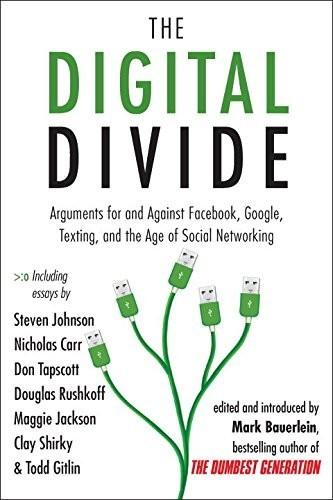
The Digital Divide: Arguments for and Against Facebook, Google, Texting, and the Age of Social Netwo Rking
by
Mark Bauerlein
Published 7 Sep 2011
Wikipedia is already in the top 100 websites, and many think it will be in the top ten before long. This is a profound change in the dynamics of content creation! • Sites like del.icio.us and Flickr, two companies that have received a great deal of attention of late, have pioneered a concept that some people call “folksonomy” (in contrast to taxonomy), a style of collaborative categorization of sites using freely chosen keywords, often referred to as tags. Tagging allows for the kind of multiple, overlapping associations that the brain itself uses, rather than rigid categories. In the canonical example, a Flickr photo of a puppy might be tagged both “puppy” and “cute”—allowing for retrieval along natural axes-generated user activity
…
Ellis Island E-mail Embodied experience Emotional context Encyclopaedia Britannica Enron Entertainment, Net Geners and Epinions E*Trade EVDB evite Evolution “Evolution” (video) Evolving rule systems Executive system Expert reading brain eyePROXY Facebook civic networks and identity setup on politician’s pages on self-portraits on The Facebook Effect: The Inside Story of the Company That Is Connecting the World Facial expressions Fake, Caterina Farley, Jim Fast ForWard program 50 Cent Flexibility practicums Flexible Bodies (Martin) Flexible self Flexible workplaces Flextime Flickr Focault, Michel Folksonomy Foreman, Richard Fortune 500, 43things.com Fox Fragmented self Free Culture: How Big Media Uses Technology and the Law to Lock Down Culture and Control Creativity (Lessig) Freedom Free speech activism Freudian psychology Friedman, Bruce Friedman, Milton Friedman, Thomas Friendship Friendster Froogle Fuhrmann, August Full Spectrum Warrior (video game) Functional magnetic resonance imaging Fundamental Guidelines for Web Usability Funicello, Annette Future content “The Future of Learning Institutions in a Digital Age” (Davidson and Goldberg) Future Shock (Toffler) Galen Game-based learning Gawker Generalizations Generation gap Genetics GeoCities Gergen, Kenneth German Ideology (Marx) Get-out-the-vote efforts (GOTV) Gillmor, Dan Gladwell, Malcolm GM Gmail Goal-oriented behaviors Goldberg, David Theo Good (magazine) Google brain while using interpreting results from measurement in search strategies and shopping search engine on Web 2.0 and Wikia and Google Maps Google Mobile Application Googleplex Gore, Al Gorman, Michael GOTV.
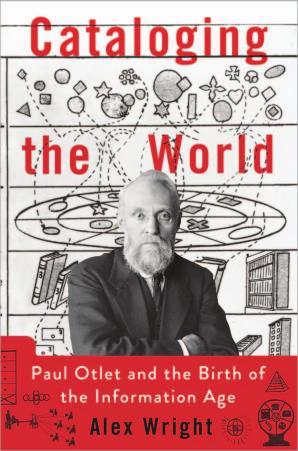
Cataloging the World: Paul Otlet and the Birth of the Information Age
by
Alex Wright
Published 6 Jun 2014
It’s an appealing notion, but in practical terms crowdsourced classification, which is what this represents, may prove no less a fantasy than Otlet’s dream of a world government managing the world’s intellectual output. For several years in the mid-2000s, Web cognoscenti held out high hope for so-called folksonomies (a neologism coined by Thomas Vanderwal), participatory tagging systems in which users classify material en masse using open-ended keywords, rather than relying on expert cataloging systems. Despite a burst of initial enthusiasm among Web designers and developers, that movement largely failed to bear fruit.
…
See also Books Citizendium, 284 Wikipedia, 283–286 Encyclopedia Universalis Mundaneum (EUM), 191–193, 192, 230, 236–237 The End of War (Otlet), 147, 151, 152, 155 Engelbart, Douglas, 15, 258–260, 262, 287, 290 The Engineer von Satanas (Robida), 63–64 ENIAC, 258 Erasmus, 25, 148 Esperanto, 67–68, 119, 150, 206–207 An Essay Towards a Real Character and a Philosophical Language (Wilkins), 29 European Union Google’s relationship with, 297, 299–300 Quaero, backing of, 299 vision of unified Europe in early twentieth century, 148 Evolutionary cybernetics, 287 Excerpt cabinet, 30–31, 32, 32 Exposition of Documentary Material (Paris 1946), 190 Exposition Universelle (Paris 1900), 62, 64, 64–65, 67–68, 87–88, 116, 130 Fabian Society, 148 Facebook, 281, 289–291, 292, 298 Factory assembly lines, 35 340 INDEX Faustus story, 24 Fellows, Dorcas, 177 Field, Herbert, 75 Folksonomies, 279 Foxe, John, 26 France. See also Paris Committee on Intellectual Cooperation, headquarters proposal for, 178–179 empire in Africa, 51 Franco-Prussian War, 100 Freebase, 278 French Academy of Science, 33 French Association for the Advancement of Sciences, 76 Friedman, Thomas L., 303 Friends of the World Palace, 12, 13 “From ‘The London Times’ of 1904” (Twain), 91 Fust, Johann, 24 Futura font, 196 “The Future and Infinity, Eternity and God” (Oslet essay), 225 Gardner, Isabella Stewart, 128 Garvey, Marcus, 170 Gates, Bill, 280, 307 Geddes, Patrick.

Remix: Making Art and Commerce Thrive in the Hybrid Economy
by
Lawrence Lessig
Published 2 Jan 2009
If you knew someone you trusted, maybe you’d read her blog. But why would you waste your time reading some random person’s thoughts about anything at all? The next two layers helped solve this problem. The first added some order to the blogosphere. It did so by adding not a taxonomy but, as Thomas Vander Wal puts it, a “folksonomy to this RW culture.”11 Tags and ranking systems, such as del.icio.us, Reddit, and Digg, enabled readers of a blog or news article to mark it for others to find or ignore. These marks added meaning to the post or story. They would help it get organized among the millions of others that were out there.
…
David Sifry, “The State of the Live Web,” Sifry’s Alerts, April 5, 2007, available at link #29 (last visited July 23, 2007); David Sifry, “State of the Blogosphere, October 2006,” Technorati, available at link #30 (last visited July 23, 2007). 10. Benkler, Wealth of Networks, 217. 11. Thomas Vander Wal, “Off the Top: Folksonomy Entries,” Vanderwal.net, October 3, 2004, available at link #31. 12. Don Tapscott and Anthony D. Williams, Wikinomics: How Mass Collaboration Changes Everything (New York: Portfolio, 2006), 41. 13. Ibid., 52. 14. Ibid., 144–45. 15. Ibid., 42. 16. “Blogging Basics,” Technorati, available at link #32 (last visited July 23, 2007). 17.
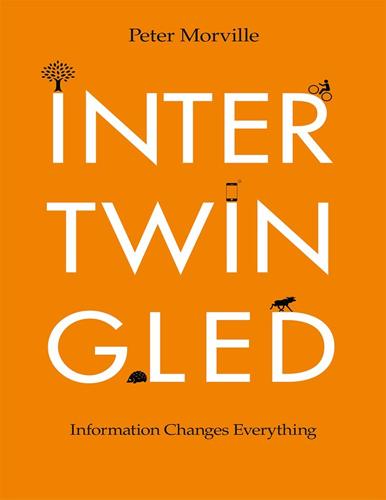
Intertwingled: Information Changes Everything
by
Peter Morville
Published 14 May 2014
Free tagging is descriptive classification without authority control. There is no hierarchy. Each tag is a category. Each object may have many tags, and vice versa. It’s messy but it works. Heck, #occupywallstreet launched a movement. And event tags like #barcamp are the timely ties that bind us together. Figure 2-18. A tag cloud at LibraryThing. Folksonomy has a light footprint, as it’s hard to see the whole. The glimpse we get through clouds isn’t nearly as satisfying as the view from the top-level of a taxonomy. But to fix on that contrast is to miss the point. Tagging flips the model. Rather than place each object in a hierarchy, taggers describe objects any way they want.

The Fundamentals of Interior Design
by
Dodsworth, Simon
and
Anderson, Stephen
Published 29 Jan 2015
Hove: Pavilion Books, 2005. Tanizaki, Junichiro. In Praise of Shadows . London: Vintage, 2001. Online Resources Online magazines Archidesignclub www.archidesignclub.com/en Architizer www.architizer.com Architonic www.architonic.com Blueprint and FX magazine’s online presence www.designcurial.com/folksonomy/blueprint Designboom www.designboom.com/interiors Detail www.detail-online.com Dezeen www.dezeen.com Frame www.frameweb.com Interior Design Magazine www.interiordesign.net Interior design blogs Cribcandy www.cribcandy.com The Cool Hunter www.thecoolhunter.co.uk Cool Hunting www.coolhunting.com Design Milk www.design-milk.com Oblique Strategies; to help overcome designers block www.joshharrison.net/oblique-strategies Playing with color schemes www.kuler.adobe.com/create/color-wheel Remodelista www.remodelista.com Thoughts on retail design www.retaildesignblog.net Trend spotting Trendland www.trendland.com Material databases Materia www.materia.nl Materials Connexion www.materialconnexion.com SCIN www.scin.co.uk/index.php Sustainability assessment tools BREEAM www.breeam.org/about.jsp?
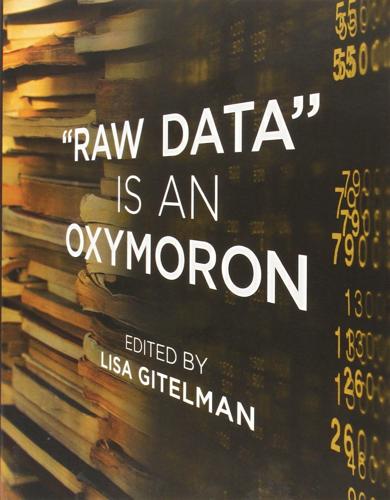
Raw Data Is an Oxymoron
by
Lisa Gitelman
Published 25 Jan 2013
While dataveillance functions as an instrument of biopolitical control, in other words, it also enables civic participation, at least insofar as one regards as significant the effects of private citizens performing both their own background checks with Google and Facebook and their own market research through user ratings and sites such as Yelp. “Folksonomies,” usercreated systems for establishing value (via tagging, bookmarking, and rating) similarly function as a means of making community. From Amazon to Digg, there is a vast network to which we can turn to assess our value as producers (of comments, reviews, commodities) and consumers (as trusted users and buyers), one whose seemingly inconsequential rewards (stars, levels) mask a deep sense of community.
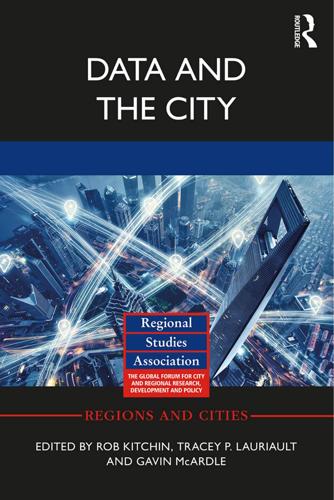
Data and the City
by
Rob Kitchin,Tracey P. Lauriault,Gavin McArdle
Published 2 Aug 2017
Data cultures, power and the city 199 Bates, J. (2013) ‘The domestication of open government data advocacy in the United Kingdom: a Neo-Gramscian analysis’, Policy and Internet 5(1): 118–137. Bates, J. and Rowley, J. (2011) ‘Social reproduction and exclusion in subject indexing: a comparison of public library OPACs and Library Thing folksonomy’, Journal of Documentation 67(3): 431–448. Batty, M., Axhausen, K.W., Giannotti, F., Pozdnoukhov, A., Bazzani, A., Wachowicz, M., Ouzounis, G. and Portugali, Y. (2012) ‘Smart cities of the future’, The European Physical Journal Special Topics 214(1): 481–518. Bowker, G. (2000) ‘Biodiversity datadiversity’, Social Studies of Science 30(5): 643–683.
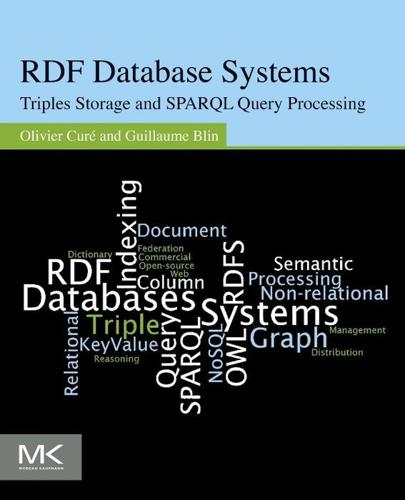
RDF Database Systems: Triples Storage and SPARQL Query Processing
by
Olivier Cure
and
Guillaume Blin
Published 10 Dec 2014
Compared to OWL2 EL, OWL2 QL is particularly adapted to knowledge bases characterized by a large Abox and a relatively small TBox with an expressiveness corresponding to a UML class diagram or an entity relationship schema. 3.5.5 SKOS There exists an important number of controlled vocabularies, taxonomies, folksonomies, subject heading systems, or thesauri that are being used within organizations, such as the Library of Congress Subject Headings (http://id.loc.gov/authorities/subjects.html). Although serving applications in an efficient manner, these knowledge organization systems (KOS) do not provide an exchange or linking facilities and are hard to distribute across the Web.

Artificial Intelligence: A Guide for Thinking Humans
by
Melanie Mitchell
Published 14 Oct 2019
The program ran on specialized parallel computers in order to search rapidly through huge databases of knowledge. As a New York Times Magazine article recounted, “Ferrucci’s team input millions of documents into Watson to build up its knowledge base—including, [Ferrucci] says, ‘books, reference material, any sort of dictionary, thesauri, folksonomies, taxonomies, encyclopedias, any kind of reference material you can imagine getting your hands on.… Novels, bibles, plays.’”6 For a given clue, the program produced multiple possible responses and had algorithms for assigning a confidence value to each response. If the highest-confidence response exceeded a threshold, the program buzzed in to give that response.
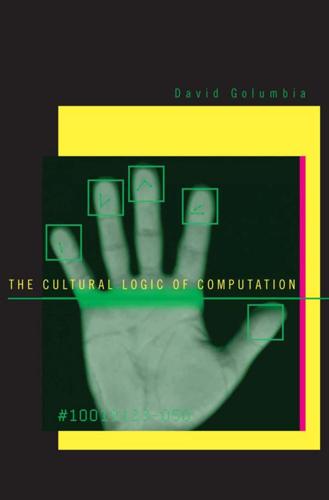
The Cultural Logic of Computation
by
David Golumbia
Published 31 Mar 2009
Closely allied to the emphasis on hierarchy is an emphasis on categorization. Every in contemporary computing one sees a profound attention to categories—one might even call it a mania for classification. In the contemporary so-called “Web 2.0” and “social web,” one of the main technologies is an XML-fueled insistence on “taxonomy,” “folksonomy,” and “ontology.” These words cover an engineering presumption that we would be much better off if the data on the web was collected into hierarchically arranged categories—categories that are ultimately meant for machine processing more than for human processing. Currently, almost every major website has implemented one kind of tagging function or another—from the keyword tags on Amazon.com to the large-scale tagging function on sites like Digg .com.
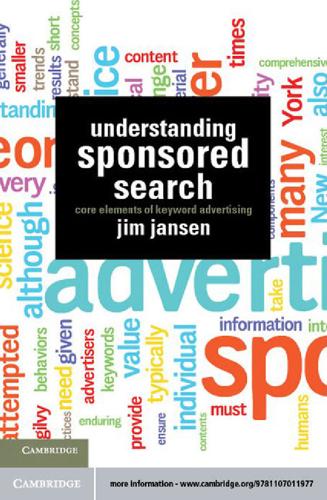
Understanding Sponsored Search: Core Elements of Keyword Advertising
by
Jim Jansen
Published 25 Jul 2011
Wear-out: pertains to the notion that after consumers have been exposed to an ad repeatedly, the ad may lose its effectiveness and may actually produce negative effects (see Chapter 4 ads). Web 2.0: a phrase that refers to a supposed second generation of Internet-based services. These usually include tools that let people collaborate and share information online, such as social networking sites, wikis, communication tools, and folksonomies (Source: Search Engine Watch) (see Chapter 2 model). Web analytics: site analytics essential to the success of any Web site. They provide you with information detailing how visitors are interacting with your site as well as how successful your supporting eMarketing techniques are on your site’s performance.
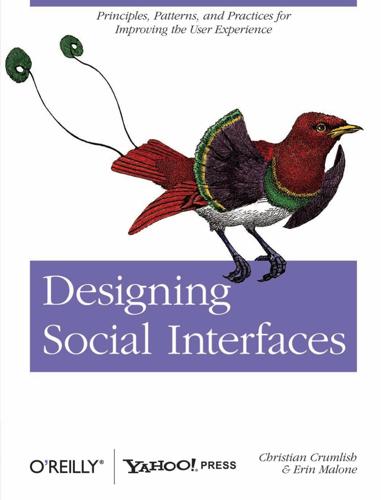
Designing Social Interfaces
by
Christian Crumlish
and
Erin Malone
Published 30 Sep 2009
Download at WoweBook.Com Deliberately Leave Things Incomplete 17 Deliberately Leave Things Incomplete One of the key differences between designing a social environment online and designing a traditional media-style, broadcast-oriented content site is that the design of a social community online cannot be entirely predetermined. Or, rather, let me say that it should not be. The denizens of a social site must be given the opportunity to “finish” the design themselves. This principle finds form in a number of familiar concepts: customization, skinning, usercontributed tags, and the emergent folksonomies they can give rise to. You might call this part of the process “meta-design.” Rather than giving our users a fish, we are giving them a rod, reel, bait, and instructions to teach them how to fish. We design the rules of the system but not all of the outcomes. Some call this generative design, as you are designing interfaces that enable your participants to generate their own finished environments.
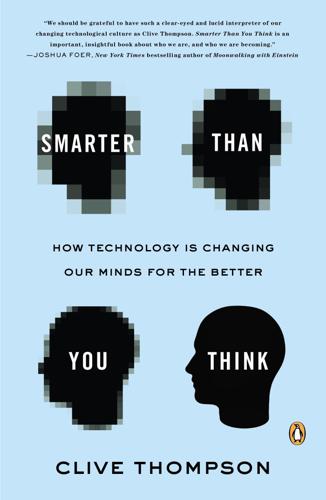
Smarter Than You Think: How Technology Is Changing Our Minds for the Better
by
Clive Thompson
Published 11 Sep 2013
To “teach” Watson, IBM had spent three years patiently feeding the supercomputer millions of pages’ worth of documents. After my humiliating defeat at Watson’s hands, I went for lunch with David Ferrucci, the witty, frenetic head of the Watson project. His creation, he said, had been trained on “books, reference material, any sort of dictionary, thesauri, folksonomies, taxonomies, encyclopedias, any kind of reference material you can imagine getting your hands on or licensing. Novels, Bibles, plays.” Far more than I or any human could ever absorb, certainly. But the spookiest thing about Watson was its ability to grapple with the clever, often obtuse wordplay for which Jeopardy!

The Black Box Society: The Secret Algorithms That Control Money and Information
by
Frank Pasquale
Published 17 Nov 2014
Founded by a pair of young entrepreneurs, it grew explosively in the mid-2000s as a cornucopia of unauthorized videos: old films that had been MIA for decades; obscure gems of musical performance; early animations; political speeches. (Cats, too.) THE HIDDEN LOGICS OF SEARCH 93 Users uploaded millions of hours of their own content, and community members helped each other organize the material, developing a tagging “folksonomy” so clever that searchers could fi nd even the most obscure content.187 The sale of YouTube to Google for over a billion dollars in 2006 was cheered as another of the great tech success stories. But YouTube was not universally adored. To many leading copyrightholders, it was an unrepentant enabler of infringement.

The Future of the Internet: And How to Stop It
by
Jonathan Zittrain
Published 27 May 2009
Early photo aggregation sites like Flickr were premised on a seemingly dubious assumption that turned out to be true: not only would people want an online repository for their photos, but they would often be pleased to share them with the public at large. Such sites now boast hundreds of millions of photos,72 many of which are also sorted and categorized thanks to the same distributed energy that got Mars’s craters promptly mapped. Proponents of Web 2.0 sing the praises of “folksonomies” rather than taxonomies—bottom-up tagging done by strangers rather than expert-designed and -applied canonical classifications like the Dewey Decimal System or the Library of Congress schemes for sorting books.73 Metadata describing the contents of pictures makes images far more useful and searchable.
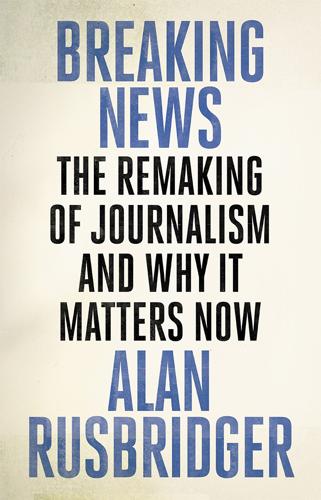
Breaking News: The Remaking of Journalism and Why It Matters Now
by
Alan Rusbridger
Published 14 Oct 2018
She shared a chart,3 showing the difference between Web 1.0 and Web 2.0 Web 1.0 Web 2.0 DoubleClick --> Google AdSense Ofoto --> Flickr Akamai --> BitTorrent mp3.com --> Napster Britannica Online --> Wikipedia personal websites --> blogging evite --> upcoming.org and EVDB domain name speculation --> search engine optimization page views --> cost per click screen scraping --> web services publishing --> participation content management systems --> wikis directories (taxonomy) --> tagging ("folksonomy") stickiness --> syndication If a story was a linear piece of narrative, we were moving into something that looked entirely different. You might think of it as a spine and spokes, or as a tree and branches. A reader might not want to start at the beginning and finish at the pre-ordained end. They might want to branch off here to explore this tributary.

The Art of SEO
by
Eric Enge
,
Stephan Spencer
,
Jessie Stricchiola
and
Rand Fishkin
Published 7 Mar 2012
The tags or keywords that you associate with your photo will make sure users can find it when they are searching and will lend keyword weight to the photo’s page. Enter as many tags as possible that accurately describe your photo. Make sure you place any multiword tags within quotation marks (e.g., “pickup truck”). The Flickr Tag Cloud, Flickr’s user-tag “folksonomy,” generates a good link navigation system for both users and search engine spiders. This should be obvious, but have your photos publicly viewable, not restricted to viewing by only your friends and family. Create a descriptive title for the image. This adds yet more keyword weight to the photo’s page within Flickr.